#anime opening 2021
Photo
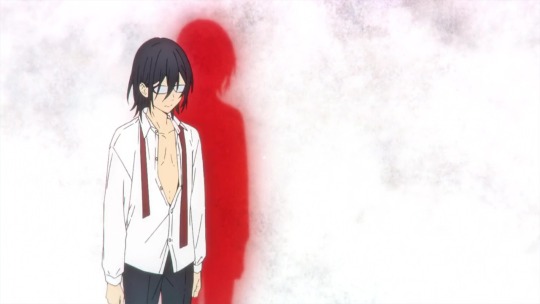
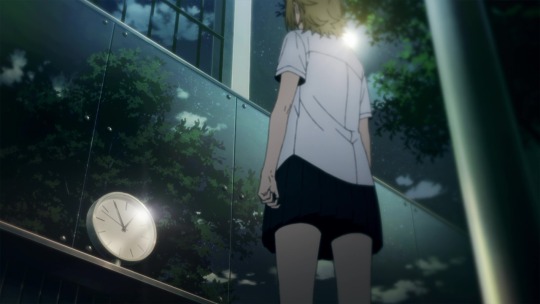

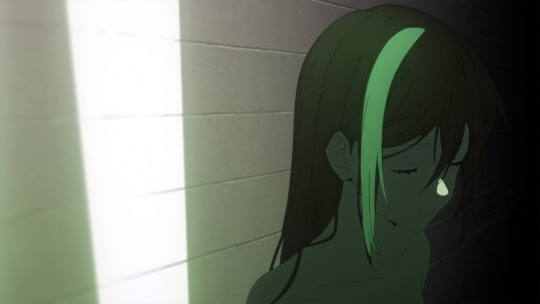
28 notes
·
View notes
Text

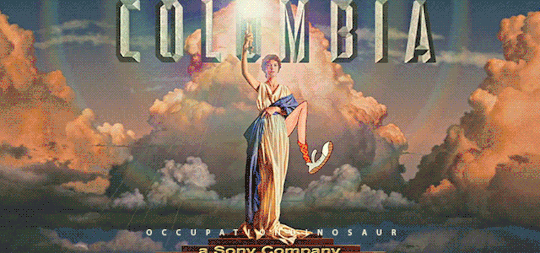


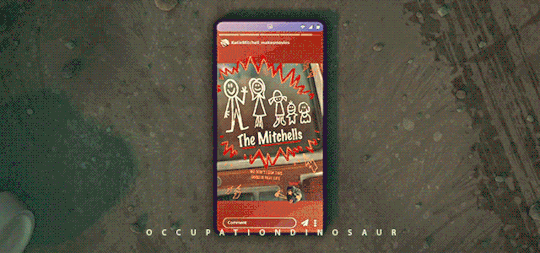
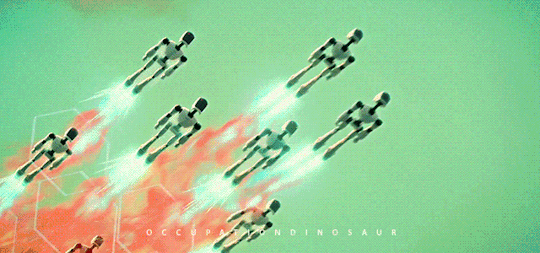
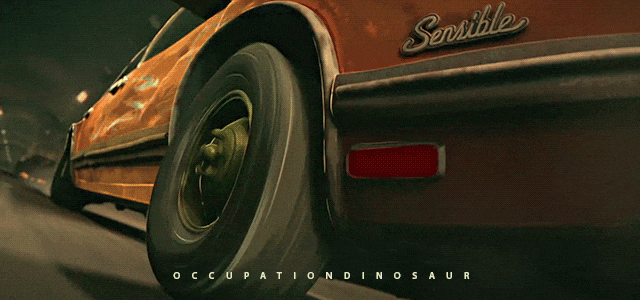



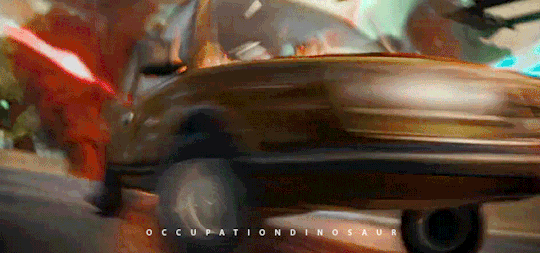

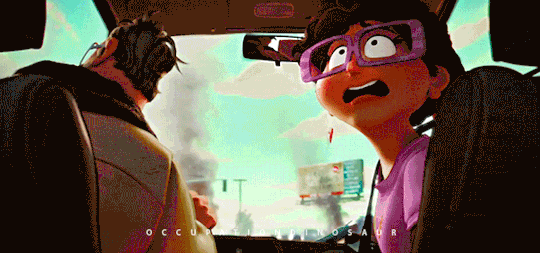
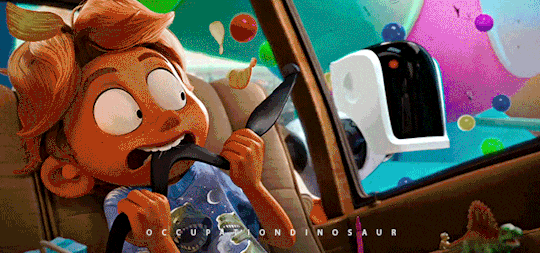

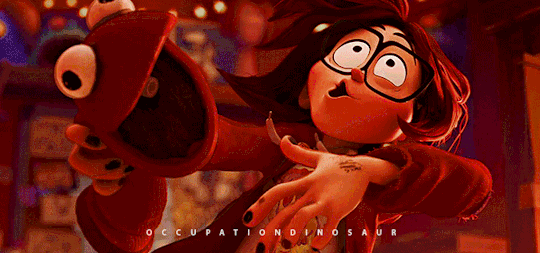

🡒 🎥 THE MITCHELLS VS. THE MACHINES • Opening Credits, 2021.
«Families can be hard, but they're so worth fighting for. They might be one of the only things that are.��
#the mitchells vs the machines#the mitchells vs the machines gif#netflix#animation movie#movie#movies#movie gif#movies gif#animation#opening credits#opening credits gif#occupationdinosaurgif#gif#my gif#gif pack#2021#motion graphic#3d graphic#graphic design#illustrations#doodles#what a masterpiece for me#netflix gif
3 notes
·
View notes
Text

Baizhu
- It's raining outside, and I just finished picking herbs.
commission patreon twitter
#genshin#genshinimpact#genshin impact#fanart#art#anime#game#2021#damia_art#drawing#ukrart#український tumblr#укртумбочка#украрт#genshin impact fanart#character#commissions open#baizhu#baizhu genshin impact
27 notes
·
View notes
Text
my sister and i managed to finish our months' long endeavour to rank all 103 openings in our anime/donghua playlist, here are my top 30

#i just love making lists and rankings 🫶🏾🫶🏾#although this is more of tier list i guess#values were assigned up to 10 based on opening music + video + subjective vibes associated#very predictable if you talked even once about anime ops with me but it gets more interesting further down i guess#spyair is the clear winner they make very good cheesy anime ops 🫶🏾#surprising might be free op 1 unless you are my spotify wrapped 2021 i just love that whole op#this year the zom 100 op 2nd vers by kana boon was so entertaining to me the song the visuals it's so fun#number 1 easily digimon op 1 in german it was THAT anime op in my age range so many can still sing it word for word 🫶🏾#very self indulgent post if you are still reading this ilu mwahhh
2 notes
·
View notes
Text
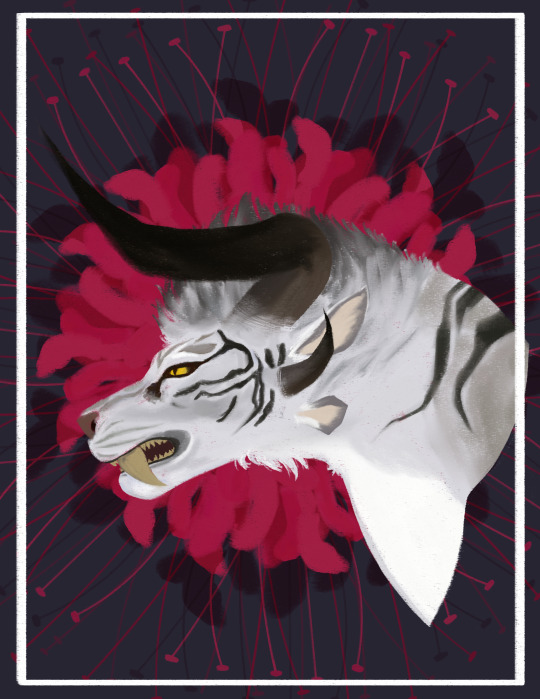
#charr#guild wars 2#guild wars art#gw2#gift art#open commissions#spider lily#fanart#my art#2021#animal art#furry#furry art
15 notes
·
View notes
Photo
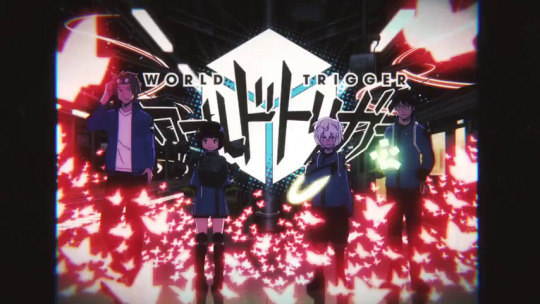
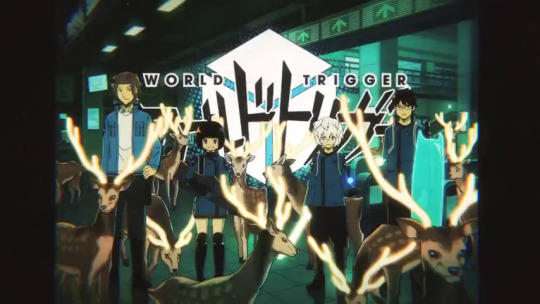



“World Trigger” season 3 opening. [Toei Animation - 2021-2022].
27 notes
·
View notes
Text

#Overlord IV#オーバーロード IV#Overlord#Blue Roses#Lakyus Alvein Dale Aindra#Tina#Tia#Evileye#Keno Fasris Invern#opening#Anime#Anime Girl#Kawaii#Waifu#Cute#Anime Caps#Anime 2021#TMEanime#Japanese#Animecaps#Animation
15 notes
·
View notes
Text
Friend who hasnt rly watched much rg but shares an interest in anime: wait but are there gymnasts that have used anime music
Me, about to go on a 30 minute rant and spam spree of links: ✌️🤓 👁️👄👁️
As for how this came up - me fantasizing about a "deep down" by aimer ribbon routine(yes, chainsaw man ending 9). I mean, if something is popular enough this dream is realistic enough, right.... Right???
#rhythmic gymnastics#anime#me just doing my job of converting ppl into liking rg😂#if anyone wants to know the routines im talking about:#boryana kaleyn ribbon 2019#(the moment i realised i went :o)#bulgaria 5 balls 2019#(literally the naruto ost kdkdkflfkakg)#yelyzaveta zorkina hoop 2022#(gurl thats mf sasageyo)#ketevan arbolishvili hoop 2021 and 2022#(2021 is im pretty sure a hxh ost 2022 is mf cowboy bebop opening#what an icon honestly 2 years in a row of weebiness i love it)#anime music
2 notes
·
View notes
Text
'*•.¸♡ My Blog ♡¸.•*'

Hi, call me Titi! I'm a student who likes to write, and this blog is for me to practice my writing formats as well as grammar and vocab (English isn't my first language). Here's what I write! (I'm taking requests! You can always check here to see if I have my request box open or closed!)
Masterlist
What I do write
Fluff
Platonic!reader/character
Angst
Hurt/Comfort
Smut
Oneshots
Long Series (mainly on my ao3 or wattpad acc)
What I don't write
*Some* Dark Topics (i.e inc3st, smut w/min0rs etc.)
Romantic!MinorCharacter/ReaderxOlderCharacter/Reader
Oc-Inserts
Problematic ANYTHING (i.e ships, fandoms, animes, creators, etc.)
Current Works!
Summer Thing (Ellie x Reader) [TLOU]
Exiled (Joel x Reader) [TLOU]
Other
REQUESTS ARE OPEN AGAIN MY PEARLS PLEASE SEND EM IN TO UR MAMA CLAM
-Planetita
#what i write#introduction#masterlist#fandoms#requests open#x reader#oneshots#reqs open#request#requests are open#fanfic#anime#encanto#familia madrigal#encanto 2021#dolores madrigal#antonio madrigal#alma madrigal#camilo madrigal#isabela madrigal#bruno madrigal#we don't talk about bruno#madrigal#pepa#mirabel#dolores#camilo#bruno magridal#genshin impact#diluc
7 notes
·
View notes
Text

I like serious anime content, People. So Sonic Boom researching is gonna have to wait another 24 hours until my savory feeling for an anime remake completion is over.
#showing off#towa#towa higurashi#setsuna#half demon princess yashahime#hanyou no yashahime#reborn#NEWS#opening theme#shaman king anime#finished shaman king 2021 anime finally#shaman king 2021#shaman king#horohoro#usui horokeu#the wolf#ice shaman#ainu culture#damuko#hokkaido#japan#past#pain#butterbur spirits#butterbur fields#butterbur#classroom#exchange student#wolf spirit#anger
2 notes
·
View notes
Photo
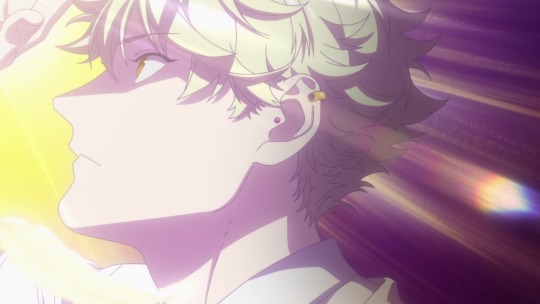

43 notes
·
View notes
Text

Warm Up Border Collie Lol.
Program: Procreate
Device: Apple. IPad Pro 2020 (9) Apple Pencil 2nd Generation.
Commission Status Open: click the link below to commission me today.
https://siteid-1637474.onuniverse.com/
#ipad pro 2021#procreate#apple pencil#ipad pro 2020#hail satan#satanic art work#satanic art#art#arizonaartist#commissions open#digital art#commissions#furry community#kawaii#カワイイ#デジタルアート#コミッションオープン#アリゾナアーティスト#anime#aesthetic#commissions open 2022
2 notes
·
View notes
Text

Diluc in roses | Ділюк у трояндах.
Доволі стара робота, але, можливо, багато хто її не бачив. З неї настав момент, коли мені мені почали подобатися свої малюнки. Досі залишається однією з моїх улюблених робіт. Була приурочена до міжнародного дня жінок 🌹🍷
Сонячна. Ніжна. Інтимна.
commission patreon twitter
#genshin#genshinimpact#genshin impact#fanart#art#anime#game#2021#damia_art#drawing#ukrart#український tumblr#укртумбочка#украрт#genshin impact fanart#character#commissions open#diluc
13 notes
·
View notes
Text
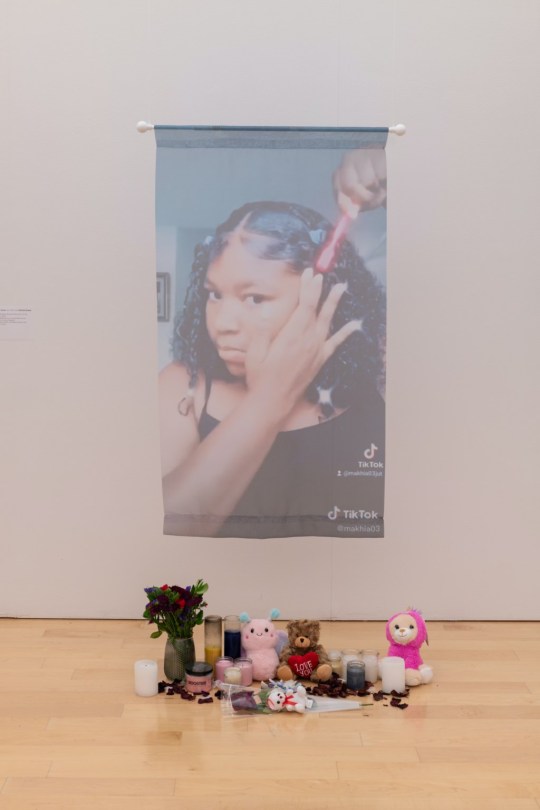

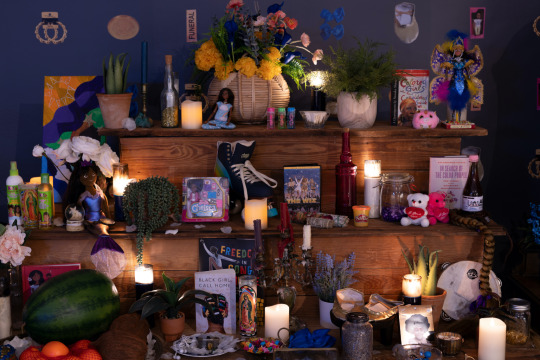
Installation view of Freedom Square: The Black Girlhood Altar at the Chicago Cultural Center
The exhibition at the Chicago Cultural Center opens with the installation “Homegoing.” The work is a suspended image depicting a screenshot from Ma’Khia Bryant’s personal TikTok. In the photo she’s laying her edges, her jet-black hair shining, her baby face clean and free of makeup. Below the printed photo is a collection of candles, stuffed animals, and a bouquet. On April 20, 2021, Ma’Khia was killed by an Ohio police officer in what was later determined a justifiable homicide. She was 16 years old.
In the gallery titled Rest and Recess: The Courtyard, the exhibition transports the viewer to the Caribbean where Black girls play together unburdened and hopeful. A tree, sculpted by Robert Narciso and made from branches from Rekia Boyd’s family home, sits in the center of the room casting a protective shadow over everything. From its branches hang yellow paper hearts scribed with the hopes and dreams of little Black girls. The sound of their joyful cacophony activates the space.
[ x ]
#chromatic voice#ma'khia bryant#rekia boyd#a long walk home#scheherazade tillet#robert narciso#we all make art#usermarmalade#police brutality#missing and murdered black women#say her name#black lives matter
3K notes
·
View notes
Text
Herschel Has Discovered Tool Use.
Again.
In january of 2021, deep in the throes of pandemic psychosis, we acquired a Corgi Puppy.
I would like to go on the record that we did not get a Corgi because they're cute. We got a Corgi because they're criminally brilliant and enthusiastic working dogs that were bred to bully cattle, which is the exact temperment a dog living in a house with three ADHD adults should have. Herschel does commit a lot of crime, but he also does his appinted service-dog job of "make everyone wake up, eat meals and go to bed at a reasonable and consistent time" extremely well, as well as his bonus jobs of "Keep the squirrels the hell out of the garden" and "Yell every time the cat does something". I didn't actually ask him to do that last job but it has helped in the "teach the cat to stay the hell off the stove" area.
But even with having a whole pack of humans another dog, and a cat to manage, this pales in comparison to his genetic capacity to manage several hundred sheep or cattle across the fields of Wales, and thus, Herschel has decided on further intellectual pursuits to occupy himself, namely, speedrunning the early phases of human tool use and terraforming.
I realized he has the brains of an entire hunter-gatherer tribe shortly after he got fixed, and within 24 hours and still dpey from anesthesia, he'd figured out that his plastic cone could be used to monopolize the water bowl and his favorite chew toys, and within a week, had learned how to carry three toys at once while leaving his mouth open by tucking the toys behind his enormous ears and under his chin. He also figured out that he could wiggle the cone to rest against his shoulders, and started using it as a shovel by literally running the bottom edge into the ground. But that wasn't making holes effeicently enough, apparently, and I ended up watching him figure out how to rotate the cone around so the two pieces of overlapping plastic were under his chin, then use his chin and the stairs to the deck to pinch both ends into a much more efficient V-Shape that let him gouge huge strips of dirt up in seconds. The anthropologists and animal behaviorists in the audience may recognize this as Tool Creation, a behavior normally only seen in higher primates, crows, and some parrots.
Once a hole of suitable length, depth and temperature had been achieved, he very carefully rolled the cone around so the digging side was over his head and the smooth side under his chin, and splooted into his hole to cool his little tummy and stitches off. It was at that point that I realized that I was going to have to teach him how to garden, or he was going to teach himself.
He no longer has the cone (He was beginning to experiment with it as a battering ram), but his morning ritual is now "Wake everyone up at 8AM by screaming, locate everyone in house and jam my nose up theirs to make sure they're alive, go outside and scream at the squirrels. Now that Yard is Secure, go get Fun Parent who has hopefully taken their meds by now, and supervise them while they rifle through the plants (this is apparently KEY to their mental health), eating any pest animals Fun Parent points out, chase squirrel AGAIN, go inside and get Breakfast cookie." and BY GOD if we deviate from it there will be much screaming and destruction. If I am not home, it has been reported that he walks round the garden beds and sniffs the plants in the order I usually check them in before he will agree to come in. He doesn't quite know what the deal with the melons is, just that they need to be checked.
But we're out of the labor-intensive parts of gardening and now into Harvesting Season, and this is a bit boring except when I give him snap peas right off the vine, and he has decided to work on the complex physics problem that is Doorknobs.
And last week, he had a breakthrough.
Sometime in 2020, my mom sort-of taught her horrible crime herding dog Arwen how to open the back door so she could let herself out as she pleased during the day and stop interrupting Mom's Zoom calls. Arwen is a Kelpie, which means she's about 60lbs with full-length legs and horrible monkey paws that are one joint away from being hands, so when Arwen wants to open the back door, she sits up, leans on the door for purchase/to push it, and uses her terrible crime hands to *push* on the knob until it turns. She can pull the knob open by pawing and catching it on her toes, but she's 11-13 years old now and has mild arthritis, so she prefers to catch it on her central pad instead. She taught Charlie, the other equally brilliant but less criminally inclined dog, to do this but he doesn't like to go outside alone, so he rarely does this.
Herschel, ever the observant student, immediately tried copying them, but even though he is actually tall enough to reach the knob, his toes are just too stubby to get a decent grip on the knob, pushing or pulling, and the first few times, gave up and sat down to scream until one of the fullsize dogs or humans came to open the door for him.
Last week, we were up at my parent's again, and I watched him hunt around the living room until he found his slightly-sticky orange rubber ball (It's clean, it's just a kind of rubber that's always a bit tacky), carry it across the house, stand up on his hind legs at the back door, put the rubber ball on top of the gap between the knob and the wall, and then push down on the ball, which caught the doorknob and turned it for him, thus opening the door. He let himself out, had a merry time yelling at the squirrels, came back in, stopped a few feet inside the door, went back out, grabbed his ball, and brought it back into his kennel, a place he can leave toys if he doesn't want the other dogs playing with them.
This means he somehow worked out how doorknobs work, how fucking levers work, and that his orange rubber ball specifically was the one that would work (none of his other toys are the correct size/texture), that he'd need that ball specifically to open the door again, and yesterday he did the same trick with the bedroom door, so he knows that the rubber ball/skeleton key can be used on all doorknobs, not just that one.
I wonder if I can teach him to sweep.
___
If you want to fund Herschel's research into Tool Use and/or get me therapy for the ensuing chaos, please feel free to donate to my Ko-Fi, or get further Dog Content by subscribing to my Patreon.
24K notes
·
View notes
Note
do you know anything about native wildlife or plant life in palestine? particularly interested in primates because that's always what i'm most interested in but i'd really like to know more about what the animals and plants native to the land are like. what they were like pre israeli occupation and what sort of animal and plant life will need repairing when palestine is free. i hear a lot about the people and the human palestinian culture and it's wonderful but it's difficult for me to find anything regarding nonhuman life and i would like to learn more about it.
Honestly, the topic of Palestinian wildlife and its intersection with colonialism has been something that has increased a lot over the past couple of years. I can't offer anything about primate species (Palestine doesn't have any) but we do have lots and lots of very cool native animals like Gazelle and Caracal and Sand foxes and lots of bats and gerbils and snakes.
The Palestine Wildlife Society actually has a website with lists of all the animals found in Palestine and what level of conservation status they are at (plus the Arabic names): https://www.wildlife-pal.org/en
The Palestinian Central Bureau of Statistics also reported back in 2012 that:
There are about 51,000 living species (flora and fauna) in historical Palestine, constituting approximately 3% of global biodiversity.
In the West Bank and Gaza Strip there are an estimated 30,904 animal species, consisting of an estimated 30,000 invertebrates, 373 birds, 297 fish, 92 mammals, 82 reptiles, and 5 amphibians. Recent studies on birds in Palestine indicated that there are 373 species, which represent 23 Orders, 69 families, 21 Subfamilies, and 172 genera. The country also hosts 2,850 species of plants from 138 families.
And also added in 2014:
Israeli Violations are the main causes of Biodiversity deterioration
Based on 2012 data from ARIJ Research Institute, the Expansion and Annexation Wall has a total length of about 780 kilometers, of which 61% has been completed. The route of the Wall has isolated 680 km2 of Palestinian land between the Wall and the Green Line, comprising approximately 12.0% of the West Bank. This land comprises about 454 km2 of agricultural, pasture land and open areas, 117 km2 that were confiscated for Israeli settlements and military bases, 89 km2 of forest and 20 km2 Palestinian built-up land.
During 2013, more than eight thousand dunums of land were confiscated from Palestinians and more than 15 thousand horticultural trees were destroyed, causing considerable damage to the Palestinian environment and biodiversity.
The Israeli settlements and military bases also contribute in the biodiversity deterioration since there were 482 Israeli settlements and military bases in the West Bank at the end of 2013 contained around 563,546 settlers at the end of 2012.
Climate change is the most important natural factor that contributes to biodiversity degradation in Palestine. More animal and plant species have become under serious threat of becoming rare due to low rainfall, high temperatures, and the changing characteristics of the four seasons, in which drought is creeping into winter and spring.
The mountain Gazelle is currently endangered and this is due mostly to the building of roads and fences as well as predation and collisions with cars (the article also references the building of housing units in Mitzpeh Nafto'ah, which one of the areas where, in 2012, Israeli developers wanted to 'build up Jerusalem'). As of 2015, there were around 2,000 identified Gazelles within the Palestinian territories and historic Palestine. The mountain Gazelle look like this:
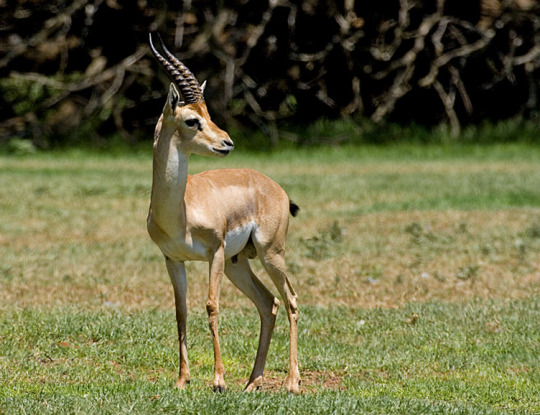
There have also been efforts for plant conservation in Palestine like the Iris Atrofusca, which has an extremely fragile population and is found almost exclusively within Palestine - a botanical garden was established for this particular Iris in the North Eastern Slopes of Palestine and in 2021, 120 clones of Iris Atrofusca were planted. Here is what they look like:

(also very interesting, sheep do not eat it!)
Probably most famous is the extinction of the Palestinian Crocodile, the last rhetorical circulation to 1935. Elizabeth Bentley wrote a great piece on it, you can read the full PDF on the Institute of Palestine Studies website or the edited (with permission) one published to Science for the People Magazine, I copied a segment from the latter here:
Colonial zoologists and collectors saw and appreciated Palestine’s bountiful plants and animals as objects of scientific inquiry. This scientific appreciation was inextricable from imperialist ambitions and the drive for profit. There were no wildlife protection laws in Palestine until 1924, which was after crocodiles’ likely regional extinction, and even then, the laws were loosely enforced. Colonial zoologists not only observed and wrote about Palestinian animals in their natural habitat. These zoological works were one of extraction and commodification.
Euphemistically termed processes of “collection” involved a network of human and nonhuman actors, whereby colonial zoologists hunted and killed Palestinian animals, studied them, and transported their remains overseas. Disemboweled, stuffed with wire and flax, and then displayed in glass cases, Palestinian animals were reanimated as spectacles for the viewing pleasure of museumgoers in London and Berlin.
While aligned with the broader trends in colonial zoology, the allure of the last Palestinian crocodile surpassed the confines of scientific inquiry; it adapted a symbolic, even mythical quality. Colonial zoologists’ ongoing speculation about Palestinian crocodile extinction necessitated a degree of willful (or internalized) unknowing about Palestine and Palestinians. Colonial zoologists were heavily dependent on Palestinians’ ecological expertise. Despite this, their writings convey mistrust and condescension toward Palestinians, along with a detachment from how local populations lived alongside Palestinian ecology.
Colonial scientific literature on Palestinian animals frequently perpetuated the racist, historically inaccurate outlook of “science for the West, myth for the rest.” Yet colonialist writings on the last Palestinian crocodile reflected their own symbolic attachments and investment in mythical thinking.
So there is a lot of work to do in regard to animal and plant conservation and several extinct animals I didn't bring up here but It is a deep dive and goes a lot farther than a lot of people consider. The Palestine Wildlife Society has a massive catalog and I hope you look through it!
1K notes
·
View notes